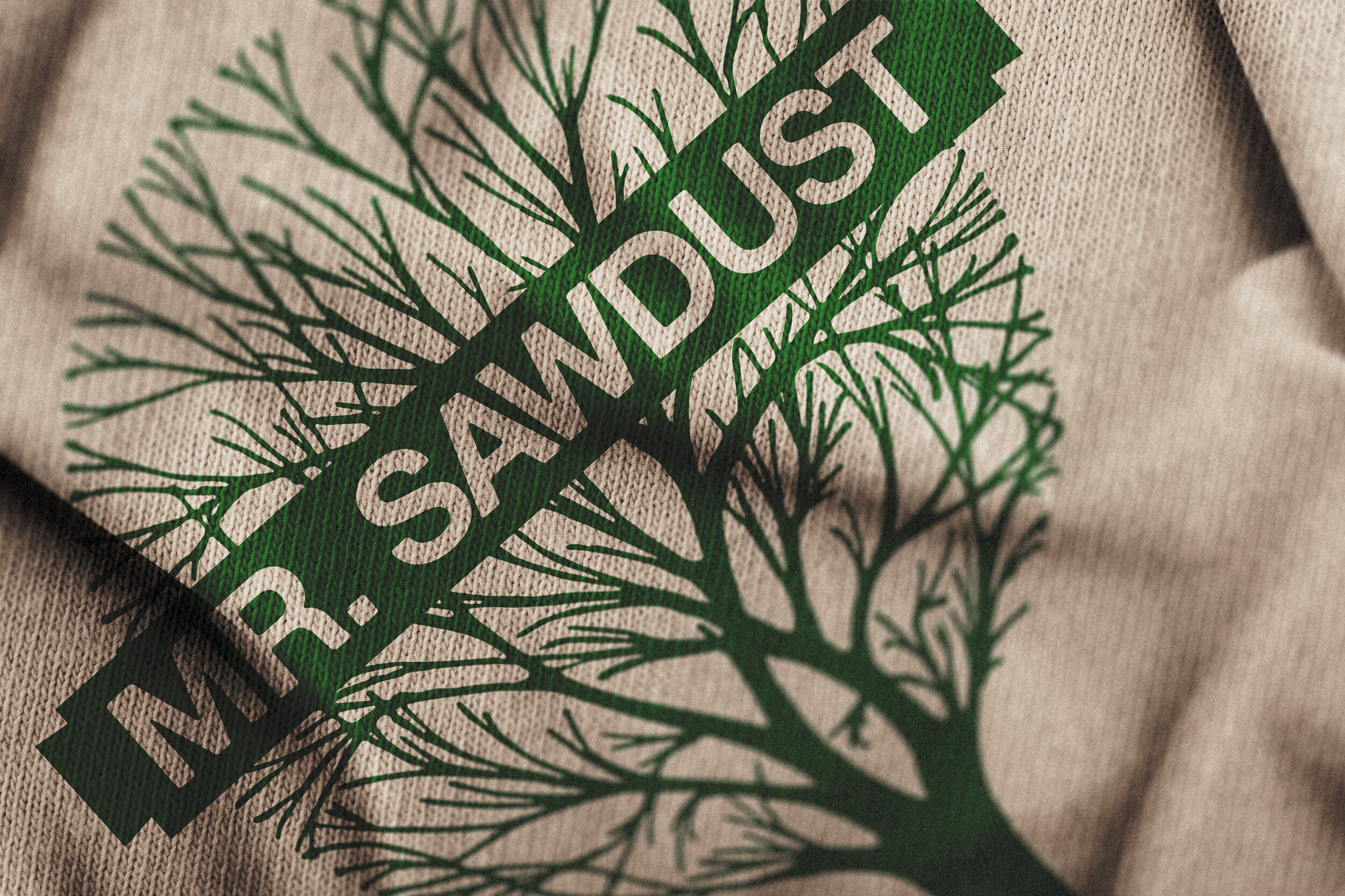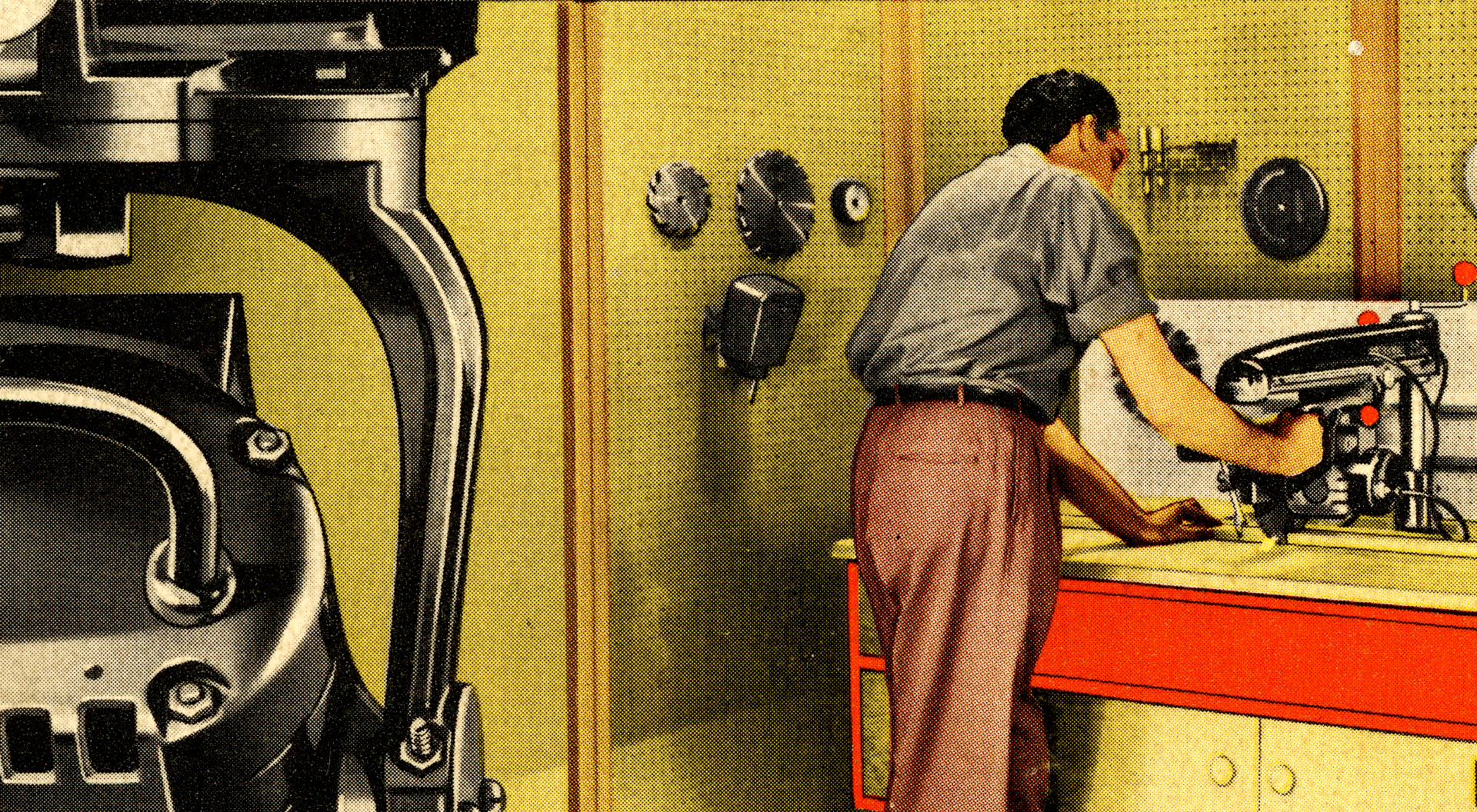
The Story of Mr. Sawdust
This is just one selection out of the original Mr. Sawdust School of Woodworking Student Handbook — be sure to take a look at the entire book!
From all the way back in 1977, found as part of the handbook given to students enrolled in the original Mr. Sawdust School.
This seems to be the origins of what would later become a chapter in his book – the chapter titled “The Great Do-It-Yourself Era” (which we’ve also published online for you to enjoy) – but there’s enough difference and various details that makes this early telling interesting all on its own.
Here you’ll find his original typewritten pages, and just below those, you’ll see we’ve transcribed the scans for easier reading.
Alright, we’ll let Mr. Sawdust take it from here…
The Story of Mr. Sawdust
For those who are interested (and many ask!)... I AM A "DeWALT MAN." More simply, I am virtually addicted to the fascinating design of this truly fabulous machine. If it had been called a "Jones Saw", I would have felt just as strongly... and would be a "Jones man"! So, let me give you a little history. Around World War I, there was a man by the name of DeWalt in the area of Lancaster, Pennsylvania. He contrived a saw that was nothing more than a motor that hung beneath and slid along a solid piece of square steel bar stock. The square bar was cantilevered from a vertical post and it could be adjusted from cross-cut through various miter positions. The motor did not tilt as I remember. But its been a lot of years since I saw the original machine. Working in a small shop with a few men, Mr. DeWalt manufactured about 50 of them with 5HP motors, put them on a train and headed for Florida where there was a land-and-building boom. He sold them quickly and he returned to make more. This was the beginning of, what he called, the Model MMB... and that means: Motorized Miter Box. That was the beginning also of a great American success story — for his business grew and the line of DeWalt Saws became THE name to buy in the woodworking industry if you wanted fast, precision cutting. The largest blade-size came on the DeWalt Timber Cutter — a four-foot diameter blade powered by 10HP. The longest was a massive 12-foot arm, with a post under each end of the arm — for extremely accurate long cuts The longest arm, supported by one post, gave a 36" cut in 45° miter. They were, each and all, magnificent works of engineering. In fact, during World War II, there were DeWalts manufactured on trailers that, except for the motor winding and the tires, were made entirely of magnesium. They were extremely light-weight and were dropped by parachute into battle-zones for the rebuilding of bridges, etc. They may have carried their own generators, I don't recall. It was a little before my time. Anyway, by 1950, DeWalt was a "Frigidaire" name and strictly industrial.For those who ask me where I fit into this picture, I'll tell the story that brought me a kind of experience few men ever enjoy. I was a writer in New York advertising... and, among other things, I was working on the American Machine & Foundry account. The first Do-It-Yourself era was really beginning to roll... and I was spending my spare time at home building furniture on a Shopsmith. (Some of that furniture is still a part of our daily lives.) It was 1949 or 1950. AMF bought out Mr. DeWalt and I was handed a pile of literature about a lot of giant machines. I was excited — but when I opened to the information about the little, tiny MMB (Motorized Miter Box, remember?), I almost lost my mind. I had one sent to my home — and I'll never forget the thrill I had uncrating that little beauty! In the living-room, of course! And, after working with it for a few day, I proceeded to do a marketing study of Northern New Jersey. Twenty dealers in ten counties were selling only $20,000 worth of the MMB annually. Reason: It was I assumed that the MMB was strictly for small work in industry. My study predicted a 1500% increase potential for the first year, with the right program — and, projected across the country, I projected a veritable mountain of MMBs in the early future — just for a beginning: I didn't realize my life would never be the same again. My office was in Rockefeller Center and I received a call from the new President and the Sales Manager of DeWalt. "Come down for lunch." And I did. The President was a fine gentleman, Sam Auchincloss, who — at that time — was a lot more famous than his niece, Jackie, who would someday be a First Lady in the White House. Sam had developed the AMF PinSpotters and was now moving to a new challenge, DeWalt. The Sales Manager was Conde Hamlin. And the subject of lunch was... "If you think this is so great, DO IT!" At that moment, I became what might be called a "second generation" DeWalt man. In the plant, in Lancaster, there were a few "old-timers" who could "play a DeWalt like a violin." What they could do with those huge-size machines was — well, frightening! There were four of these fellows, in particular, who were equally adept with the small MMB: Ken Kittinger, who is retiring this next summer after 40 years with DeWalt. (Training Director for as long as I can remember.) Pete Smith, a strong little guy who was almost too short to operate the large machines (but he didn't know it!). Charlie Schneider, who would just as soon feed a DeWalt through 6" steel as a 1" board — later became a District Manager. (Pete and Charlie have both passed on.) And the fourth fellow was a really great showman with the DeWalt and his name was John Stolarz. I don't actually remember if Johnny was with DeWalt at the time I began. He had left DeWalt previously and went to Delta-Rockwell and then came back to DeWalt as Advertising Director.Anyway, I want to make a few points in my behalf at this time. And, if you wish, I'm going to be just plain selfish and stake my claim: I created the original marketing program for the MMB — as it was Presented to the home market. In following pages, I will show you pages from the first piece of literature, which I wrote, with the technical help of Ken Kittinger. I created the name of the DeWalt Power Shop — which it still carries. And with Ken and Pete, we developed it into 10 different machines, so to speak. You see, Shopsmith was the "big thing" in the Do-It-Yourself market and it was a multi-purpose machine. And, let me assure you, it was a cracker-jack machine: It was basically a lathe — a very excellent lathe — but probably the least-used operation in a shop. But what a show it made. They had a fellow by the name of "Red" Norvell. (That last name is not quite right, but close.) And when "Red" got on that lathe, the wood literally changed shape in his hand. Everywhere we went, there was "Red" — driving people wild with that lathe. And I'm talking about hundreds of people at a time. He was a real artist. We came along on the heels of Shopsmith — with a machine that was basically the finest saw in the business, which also made it the finest dadoing machine, and we also proved it was the best straight-line shaper available to the home-market. We had the three most important operations going for us with the DeWalt — plus some other operations of lesser importance — and we proceeded to knock Shopsmith out of the picture, area by area, across the country. While I was doing the creative work at the advertising agency in New York, DeWalt appointed its first District Manager in the New York area — Tom Berry. When my work was finished and "the show was put on the road", I was offered the next District Manager's position — New Jersey. And, eventually but soon, we had 32 District Managers — all highly tuned, very capable, and very competitive — and the DeWalt Power Shop became a household word. During the next ten years, I fulfilled all my previous predictions for New Jersey and had sold many millions of $ worth of DeWalt machines. I claim, with all certainty, that I conducted the first DeWalt woodworking schools for dealers. This, in no way, takes anything away from my friend, Paul Silken, who began as a DeWalt dealer in Mid-Manhattan in the early 50s and began to offer schools in 1956. He later moved his operation onto Long Island and is still running schools — having taught, I understand, over 8,000 people. He is the author of the DeWalt book which I heartily recommend. An excellent job.I also make a couple other claims: 1) I have personally sold more DeWalt Power Shops (for dealers) — face to face, man to man, direct to the customer — than any other single person. And 2) I believe I'm the last of the "old gang" left who is still active in the field (working with the customer). Kittinger is not a "field man" – or I couldn't make the claim. Around 1960, DeWalt management got greedy and allowed the Power Shop to be sold through Sears — with one stipulation: It would never carry the Craftsman name. This was a move I totally disagreed with — and I resigned. That move worked, as I predicted, totally to the eventual disadvantage of DeWalt. The previous dealer organization became disheartened, stopped demonstrating and promoting. Sears proceeded to make a bad copy to sell under the Craftsman name — and it's still a bad copy. And DeWalt was left to lick its wounds. Black & Decker then bought DeWalt from AMF and I personally thank them for one thing: They have maintained the quality and the precision of the Power Shop for which it's always been known. It's still the only radial saw in the business that can make the same cut twice. If it didn't, I can assure you, this old boy wouldn't even turn it on.It wouldn't be a DeWalt.





